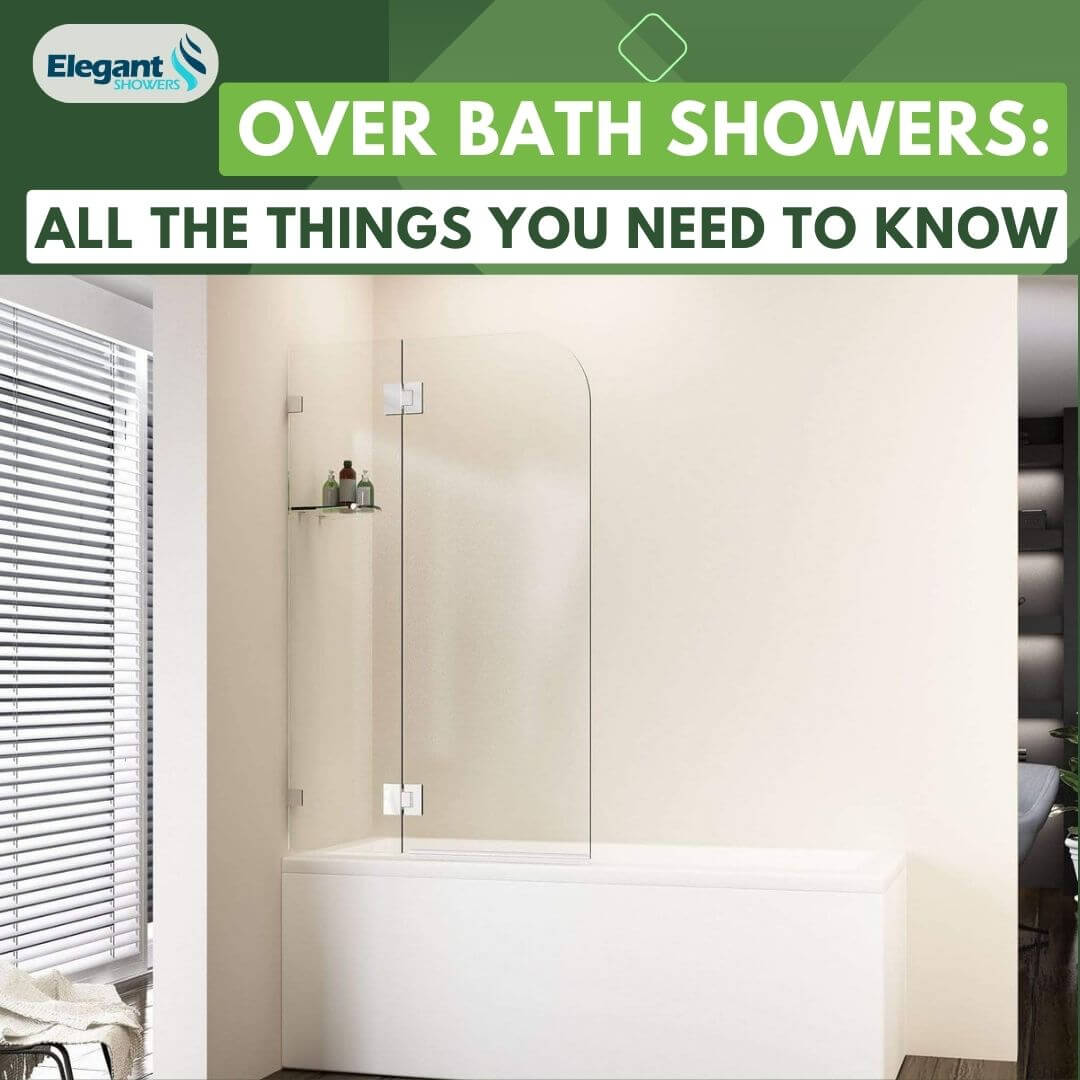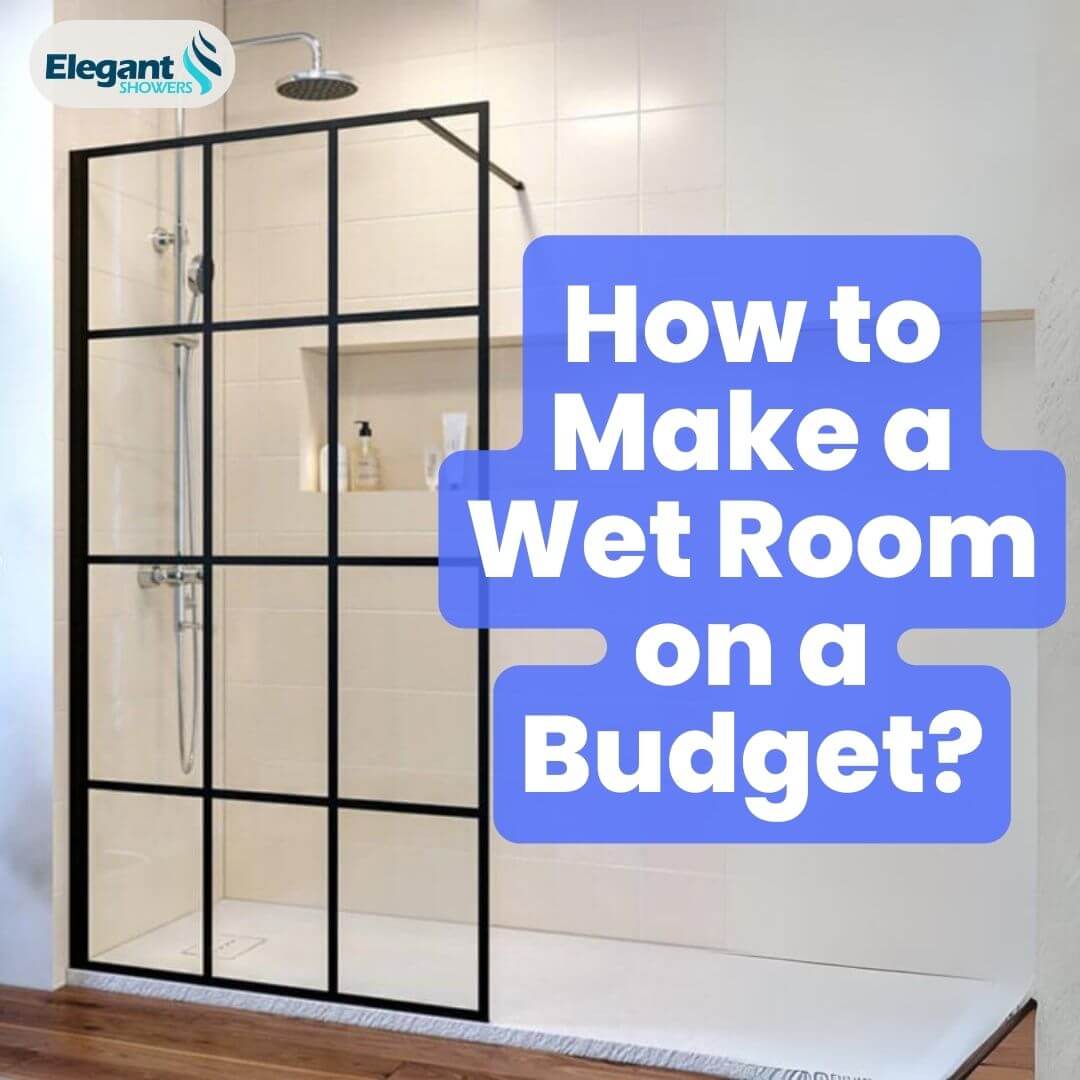When looking to install a screen above your bathtub, you'll need to decide between two main options - fixed over bath screens or pivot over bath screens. Both have their own sets of pros and cons to consider. This guide will outline the key differences, benefits, and downsides of each to help you determine which is better suited for your bathroom.
What Are Fixed Over Bath Screens?
As the name suggests, fixed over bath screens are screens that remain stationary and do not move. They are permanently fixed in place above the bathtub, attached to the wall and/or ceiling.
Fixed screens typically consist of a metal or aluminum frame that supports toughened safety glass or acrylic panes. The glass is sealed to the frame to create a waterproof barrier, protecting the rest of the bathroom from splashes.
Many fixed screens feature a minimalist and streamlined appearance, with thin frames and large glass panels. The lack of hinges or pivoting mechanisms results in a clean, simplistic look.
What Are Pivot Over Bath Screens?
Pivot over bath screens have hinges along one side that allow the screen to swing open and closed. This allows for easier access to the tub compared to fixed screens.
Pivot screens usually have two glass panels - one larger stationary section and a smaller section that pivots. The pivoting section will typically fold inwards into the bathroom or outwards into the tub area.
Pivot over bath screens often have a frame down the hinged side to accommodate the opening mechanism. This can make them slightly bulkier visually than a frameless fixed screen. However, many sleek pivot screen designs are still available.
Pros and Cons of Fixed Over Bath Screens vs. Pivot Over Bath Screens
When evaluating Fixed Over Bath Screens versus Pivot Over Bath Screens, there are a number of beneficial features and potential drawbacks to weigh for each option:
Pros of Fixed Over Bath Screens:
- Minimalist, Streamlined Look - Frameless Fixed Over Bath Screens provide a clean, smooth, contemporary appearance perfect for modern bathrooms, without any visible hinges or edges.
- Maximum Splash Protection - The completely enclosed panel offers the best splash protection, ideal for containing water in kids' or playful bathrooms. No gaps or cracks for water to escape.
- Budget-Friendly Price Point - With no moving parts or hardware, Fixed Over Bath Screens are simpler and more cost-effective to manufacture, install, and maintain. A great budget option.
- Straightforward Installation - The lack of openings and pivots makes fitting a Fixed Over Bath Screen above the tub simpler with minimal calibration required. Quick and easy to set up.
Cons of Fixed Over Bath Screens
- Restricted Accessibility - The inability to open the screen limits reachability behind for cleaning and bathing assistance. Can be inconvenient.
- Difficulty Accessing Fixtures - Faucet handles and shower heads behind the pane can be tricky to operate around the fixed barrier.
- Limited Ventilation - The permanently sealed screen inhibits airflow which can allow humidity and moisture to build up.Get expert solutions: Leaky Shower Screens: Expert Tips to Identify & Fix the Damp Problem!
- Feeling of Confinement - The closed-in design can sometimes evoke a dark, claustrophobic sensation for some users.
Pros of Pivot Over Bath Screens
- Improved Accessibility - The folding panel enables much better reachability for cleaning, bathing help, and accessing fixtures.
- Open, Airy Feel - The ability to open the screen promotes ventilation and an expansive feel, avoiding a closed-in vibe.
- Convenient Access to Handles - Users can easily reach and adjust faucet handles, shower heads, and controls through the opened side.
- Adaptable Positioning - Pivoting capacity allows users to angle the screen as needed for protection, accessibility, or ventilation.
Cons of Pivot Over Bath Screens
- More Imposing Appearance - Hinges and edges can look more mechanical and distract from a streamlined aesthetic.
- Splash Risk When Open - Gaps between panels when opened can allow water to splash outside of the tub area.
- Trickier Cleaning - Crevices and joints where panels meet harbor dirt and grime, requiring thorough regular cleaning.Get more cleaning tips: How to Keep Your Shower Screen Sparkling: Top Tips for Cleaning and Maintenance
- Challenging Installation - Getting the pivot alignment, range of motion and calibration right can make fitting more difficult.
- Higher Cost - More moving parts, engineering, and labor result in a more expensive product than Fixed Over Bath Screens.
In conclusion, Fixed Over Bath Screens provide a smooth minimalist look and budget price point, while Pivot Over Bath Screens improve accessibility and ventilation but cost more.Take a look at Sliding vs Pivot Shower Screen: Comparing the Pros and Cons! I believe you will have a better understanding for bath screens.
Fixed vs. Pivot Over Bath Screens: Which Is Right for You?
When deciding between Fixed Over Bath Screens and Pivot Over Bath Screens, carefully consider your priorities and requirements to determine the best solution:
Reasons to Select a Fixed Over Bath Screen
- For a Smooth, Seamless Look - The minimalist frameless design provides a clean, contemporary appearance. Ideal if you want a sleek, uncluttered style.
- For Optimal Splash Protection - The fully enclosed panel is best for containing water splashes, especially helpful in kids' bathrooms. Avoid potential escape gaps.
- If Seeking a Cost-Effective Option - Without moving parts, Fixed Over Bath Screens are typically more budget-friendly to produce and install. A great choice if price is a concern.
Reasons to Choose a Pivot Over Bath Screen
- If Accessibility is Crucial - The folding capacity enables much better reachability for cleaning, bathing assistance, and accessing fixtures.
- For an Open, Airy Bathroom Feel - Opening the screen allows airflow and avoids a confined vibe. Ideal if you want a spacious aesthetic.
- To Easily Access Handles and Controls - Reaching faucets, showerheads, and knobs through the side panel is more convenient.
Also, Evaluate the Specific Bathroom Space
- Consider the room dimensions - Pivot Over Bath Screens require adequate clearance for the opening motion. More compact bathrooms can be better suited to Fixed Over Bath Screens.
- Assess who will use the space most - Pivot Over Bath Screens improve access for those with mobility limitations or the elderly. Fixed Over Bath Screens suit kid-friendly areas.
- Check how the screen fits your decorative scheme - sleek Fixed Over Bath Screens suit modern motifs, while Pivot Over Bath Screens pair well with traditional decors.Know more bathroom trends: Shower Screens: 7 Trendy Shower Screen Designs for 2023
- Carefully weighing your particular priorities and bath space will clarify which screen type best matches your needs, style, and functionality.
Conclusion
When deciding between fixed and pivot over bath screens for your home, consider the key pros and cons of both designs. Fixed screens provide a sleek, enclosed look and robust splash protection. Meanwhile, pivot screens allow much easier accessibility and ventilation.
Think about your priorities, bathroom size and style, and who will be using the space. This will help determine whether a minimalist fixed screen or convenience-focused pivot screen is the best option for your bathing area. Carefully measuring the space is crucial too, so you choose a screen that fits well.
With their stylish designs and practical splash protection abilities, over bath screens are a worthwhile upgrade to consider for your bathroom. Whether you prefer a streamlined fixed screen or a handy opening pivot screen, installing one over your tub can instantly elevate your bathing space.
Q&As
Q: What size fixed over the bath screen or pivot over the bath screen should I choose?
A: Carefully measure the length and width of your bathtub to determine the optimum screen size. Add an extra 3-5cm on each side for fitting. Consider ceiling height too - pivot screens need room to swing open. An installer can advise on the best size.
Q: Can I install a fixed over bath screen or pivot over bath screen myself?
A: Installation is tricky and best left to professionals. The screen needs to be perfectly watertight and secure. A certified installer will have the skills and tools to calibrate and align the screen properly.
Q: How easy are fixed over bath screens and pivot over bath screens to keep clean?
A: Fixed screens just need an occasional wipe-down. Pivot screens require more regular cleaning of joints and edges where soap scum and grime can collect. Use a squeegee after bathing and wipe with a microfiber cloth.
Q: Are over bath screens safe for kids?
A: Both fixed and pivot screens use toughened safety glass, making them very safe. Just supervise kids around pivot screens when opened. Also, install screens properly so they don't fall.
Q: Can I still use my regular shower head with a fixed or pivot screen?
A: Most screens are designed to accommodate standard-mounted shower heads. Alternatively, you can install a handheld showerhead and use the open section of a pivot screen.
Q: How much privacy do over bath screens provide?
A: Fixed screens give total privacy. Pivot screens provide less privacy when opened but give a partitioned effect when closed. Frosted glass can further increase privacy.






